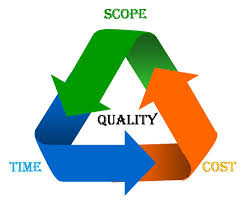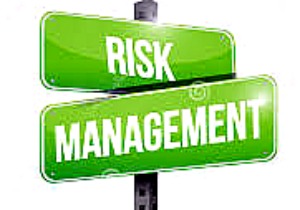Overrated or Under-appreciated??... Tomorrow’s generation may just let you know!
It’s no secret that most of us are
overworked and often under appreciated these days as the hard charge to be best in class from revenue generation to new
product generation proceeds with no end in sight, only cycles of escalation
that deploy as flag posts of progress along the lifecycle of our company.
Where a critical need for process
remediation exists, senior managers are often ready to set aside their
suspicions about the new fangled science of process management to engage in
reactive risk management (crises management) calling upon one’s process
expertise to restructure (Define, Measure, Analyse, Improve, Control) and
deploy re-engineered processes that solve the problem(s) to an acceptable level.
For many managers, this is as far as it goes, the job is done and time is
wasting so lets move on!
What many are not willing to really
entertain is the concept of proactive risk management where issues are spotted
or predicted with a level of accuracy into the future. The main reasons in my
experience are as follows:
Priorities – Company priorities require the resources needed to develop the
concepts, test and deploy same are required elsewhere or not available at all.
No time is available for such experimentation.
Inter Group Politics – Setting up a successful risk
management initiative modernising and/or introducing new services into the
organisation maybe outside of scope for the department as mandated by the
company. It also may be perceptually confrontational to other legitimate and/or
social leaders in the company who’s perceived self interests are perceptually
threatened by such an initiative. The latter point is very important in
companies that have a “Taker Culture” under the *Giver-Taker Culture.
Cost – No budget, no further thought required on the topic.
Budget
– Proactive risk management may be conceptually
acceptable but budgetary support is not forthcoming with the mantra of “if you
do it for free and your other work doesn’t suffer, then I don’t mind!”
Process/Cultural
Impact - The concept is too radical as it impacts
business practice and defies cultural norms.
As you can see, the reasons ‘why not’ are
valid and creditable, but isn’t it all about perspective? Isn’t the cost of
proactive risk management very small compared to the opportunity cost in
business loss, remediation costs and detritus staffing performance when all
things are considered? The answer is yes as long as you consider your company’s
situation, its needs, its industry and its vision for the future. Like many
things, proactive risk management is a tailored tool, not a vanilla tool
dropped equally into all organisations.
To a
use case… maybe you are a small company that builds
engines and industrial metal work rivets for the auto trade. You have no risk
management structures but your operations manager knows the industry “inside
out”. Chances are that regression analysis on two product SKUs plotting their sales
/returns and production/production scrap variables to see what “direct wastage”
from production to sales occurs and will occur may not be necessary right now.
Is it useful? Sure, but ONLY if your company is set up to handle the
information from accurate collection to accurate receiving, analysing and
effective dissemination of information results within the company.
For a proactive risk management structure,
your company’s time, resources, and efforts would be better spent on entry
level operational risk structures like setting up user groups to define and
populate a risk register to measure operational risk of static elements
(employees/management/buildings/regulatory/legal/facilities/fx-treasury/etc)
to non static elements (projects/project risk elements/customers/vendors/raw
material sourcing/marketing/pr/etc). In the risk register, you would then
define your static and non-static classifications by line/element into headings
like:
- Element Reference/Title
- Element Description
- Risk Classification
- Risk Type (Positive/Negative)
- Risk Grouping (Internal Groups Affected – remember 1st normal form applies here on multiple internal groups)
- Risk Weighting (1% low to 100% high - see calculator comments below)
- Risk Impact (1% low to 100% high - see calculator comments below)
- Risk Rank (Low, Medium, High)
- Risk Response (Solutioning - share risk, accept risk as its not likely to happen or accept risk based on it may happen but no real damage will being done, reject risk as its crazy likely to happen and heavily impacting, along with mitigate risk where you take action to reduce the impact and/or the likelihood of it happening).
You can make your calculation of risk from
1% to 100% as simple or as complicated as you like. I would say keep it simple
as a start and to get you started on this route, think of 5 equal attributes in
your calculation that you can rank your risk element on. For example:
e.g. Risk Weighting Element == Timely Payment Process
Element likely to result in material gain
or loss for the company = 28%
Element likely to happen resulting in loss
or gain in the company’s internal productivity = 15%
Element likely to happen resulting in loss
or gain in the company’s external reputation = 26%
Element likely to happen resulting in
breaches in legal and/or regulatory rules for the company = 44%
Element likely to happen resulting in a
direct gain or loss in confidence of customers and/or investors = 23%
Simple average of 5 scores = 25.2% risk weighting for timely payments process
This simple risk tool allows you to
basically define, identify, analyse and remediate risk in a structured manner. If
done in tandem with things like internal process flow analysis (mapping out all
processes and understanding the interactions form a risk perspective), where
you can understand your risk register elements in deeper detail, which will
give the team a greater insight into what to look out for into the future.
It’s hard to say what is right for every
company but to quote Albert Einstein “The
day we stop learning is the day we start dying.” I therefore submit, our
qualitative understanding of our company’s future lies in our study of our
present day circumstance. The quantitative link of today is a hook to a
qualitative picture of tomorrow that can reasonably prepare us to realise the
best possible out come through our unending quest for knowledge and
understanding for a better tomorrow.
Sources/Credits:
Pics;
Credits;
*Giver Taker Culture https://hbr.org/2013/04/in-the-company-of-givers-and-takers
[accessed 13th June, 2015] explored by Prof Adam Grant of Wharton .
*Joshua Earle for his pic posted on
unsplash.com.





No comments:
Post a Comment